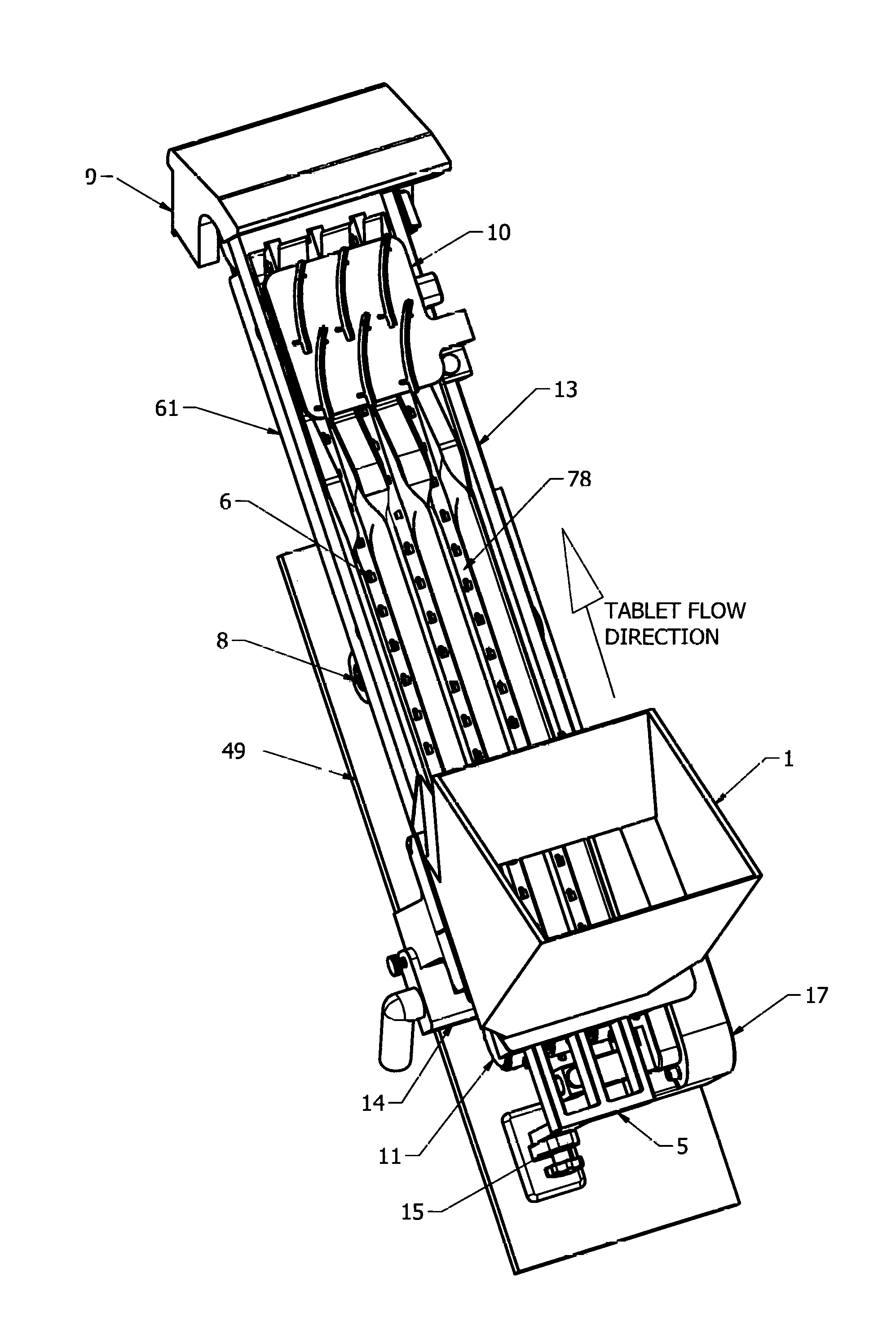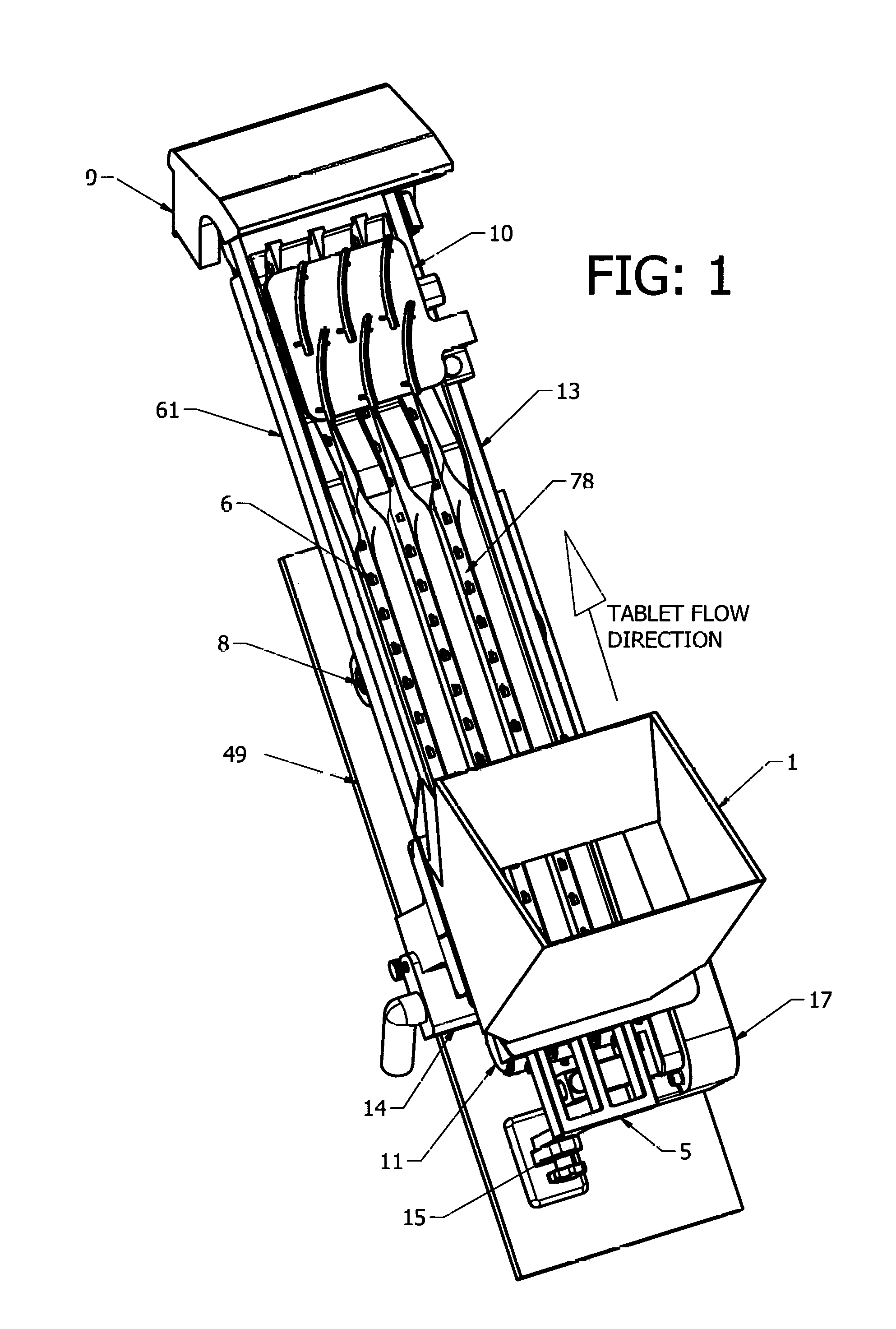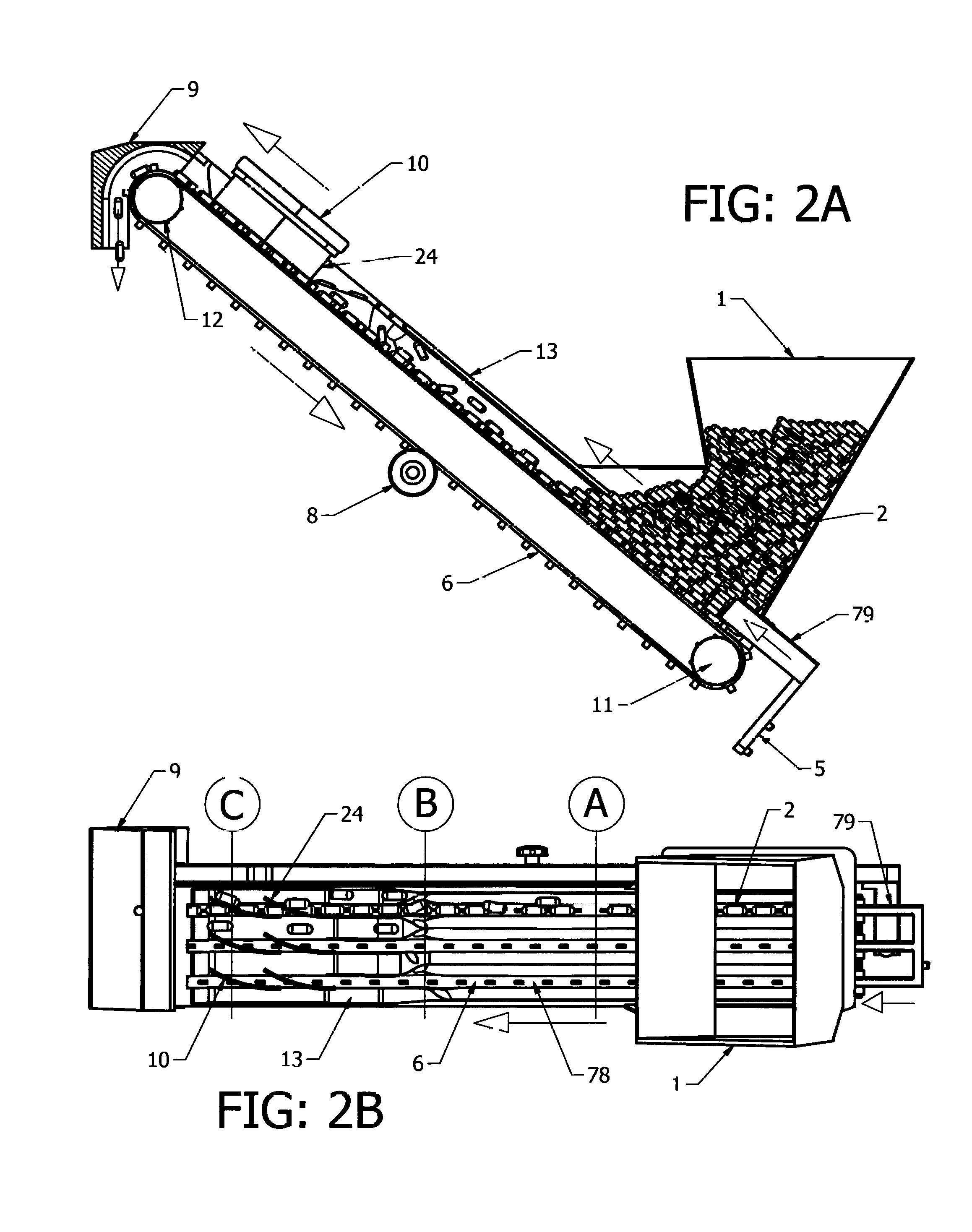Belt sorting system
a sorting system and belt technology, applied in the direction of conveyor parts, cleaning, automatic control of packaging, etc., can solve the problems of two vibrating feeder styles that are prone to make a lot of noise, large size, slow speed, etc., to achieve greater space between each tablet, improve feeding performance, and prolong the length of the cleat profile
- Summary
- Abstract
- Description
- Claims
- Application Information
AI Technical Summary
Benefits of technology
Problems solved by technology
Method used
Image
Examples
Embodiment Construction
[0106]While the various features of this invention are hereinafter described and illustrated as a Belt Sorting System for tablets, it is to be understood that the various features of this invention can be used singly or in various combinations thereof for a Belt Sorting System as can hereinafter be appreciated from a reading of the following description.
[0107]FIG. 1 shows a rear-side view of the invention. The tablets are place in the hopper 1, and are fed out by the three cleated belts 6, in an upwards direction, being guided on both sides by the triple lane tablet guide block 13. As they are sorted out into one single line along each lane 78, any doubled up tablets will be deflected off to the side by the tablet deflector assembly 10. The single row of tablets will then be guided around the exit chute 9, downwards towards the tablet sensors, gates below.
[0108]FIG. 2A is a side cross section view of the invention with capsule shaped tablets 2, in it. The hopper 1 is filled with cap...
PUM
 Login to View More
Login to View More Abstract
Description
Claims
Application Information
 Login to View More
Login to View More - R&D
- Intellectual Property
- Life Sciences
- Materials
- Tech Scout
- Unparalleled Data Quality
- Higher Quality Content
- 60% Fewer Hallucinations
Browse by: Latest US Patents, China's latest patents, Technical Efficacy Thesaurus, Application Domain, Technology Topic, Popular Technical Reports.
© 2025 PatSnap. All rights reserved.Legal|Privacy policy|Modern Slavery Act Transparency Statement|Sitemap|About US| Contact US: help@patsnap.com



